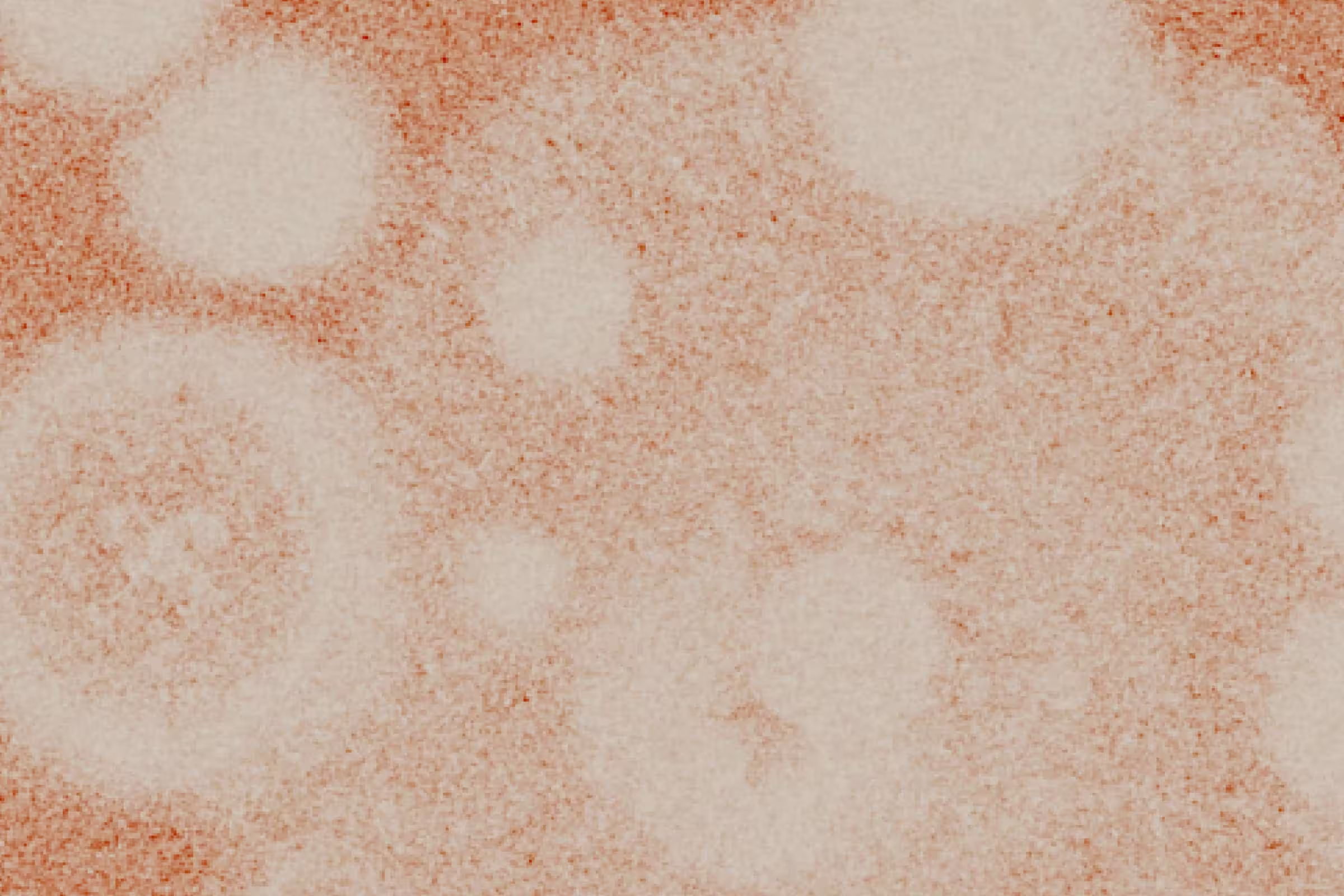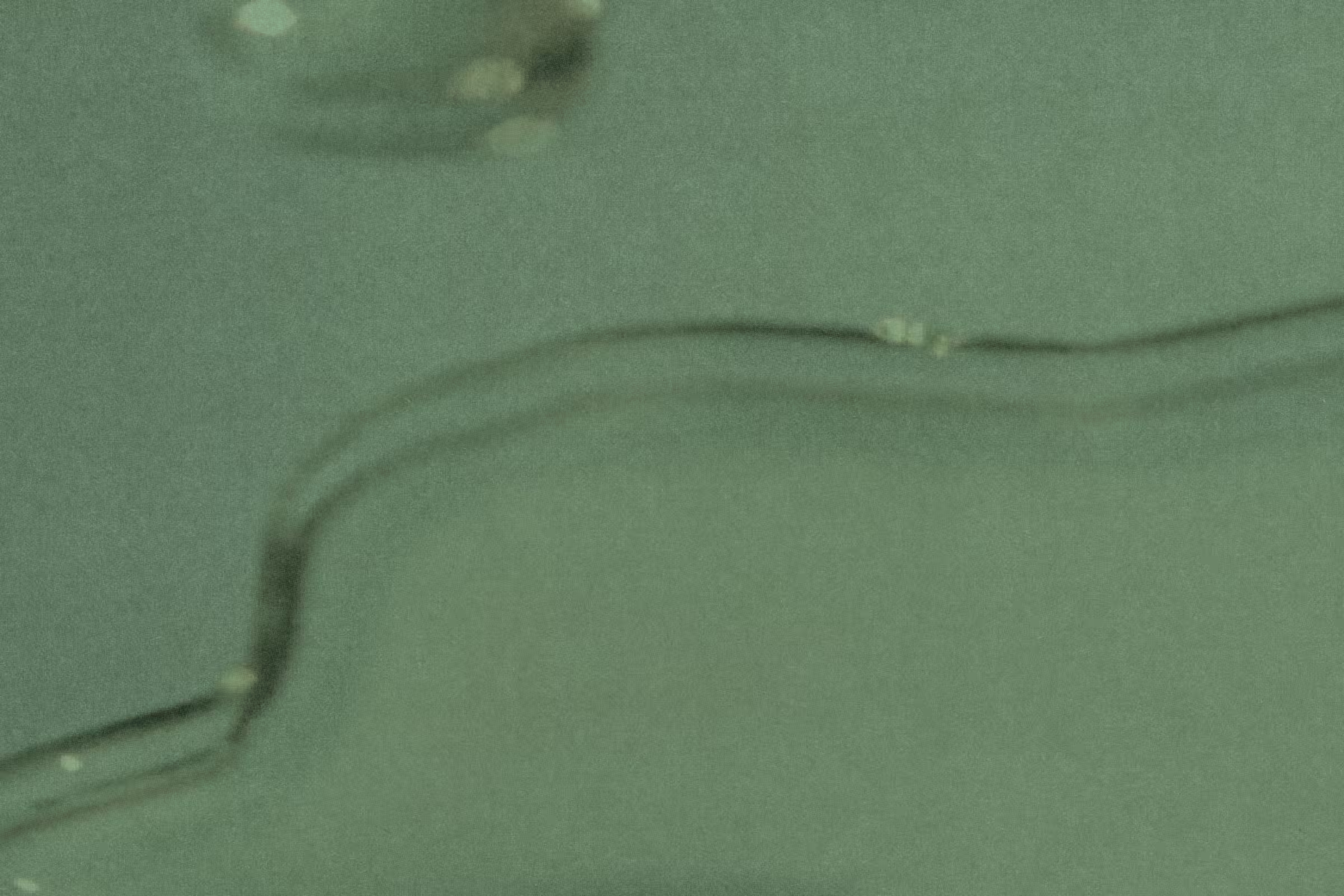

Understanding Ureaplasma: Symptoms, Testing, and Treatment Options
Learn about Ureaplasma, including symptoms, how to test for Ureaplasma, treatment options, and where the science stands.
Words by Olivia Cassano
Scientifically edited by Dr. Krystal Thomas-White, PhD
Medically reviewed by Dr. Kate Stewart, MD
Ureaplasma is a tiny strain of bacteria that lives in your urinary and genital tracts. There are two main Ureaplasma species: Ureaplasma urealyticum and Ureaplasma parvum.
Like its more senior relative, Mycoplasma, Ureaplasma is a type of bacteria known as a Mollicute, characterized by the absence of a cell wall. This means it's pretty hard to study and diagnose Ureaplasma.
Ureaplasma is a common member of the vaginal microbiome, found in 40-80% of non-symptomatic vaginal microbiomes. It doesn't usually cause symptoms, but some research has linked it to some reproductive health complications. Just like Candida (the fungi behind yeast infections) and Gardnerella (the bacteria most commonly linked to vaginitis), Ureaplasma can exist in your vaginal flora in small doses without causing symptoms or issues.
That said, researchers are constantly learning more about Ureaplasma, but it’s still pretty misunderstood. Research on female health is sorely lacking — let alone research on Ureaplasma — and remember that just because something is under-researched doesn't mean it's disproven or not real.
Many women (including in the Evvy community) feel like a Ureaplasma infection is at the root of their symptoms, and those experiences are entirely valid. We know it can be very frustrating to deal with non-stop symptoms only to be told "nothing is wrong with you." That's why there needs to be a comprehensive understanding of Ureaplasma's role in vaginal and reproductive health.
To help you understand it, we summarized the available (and admittedly limited) scientific literature on Ureaplasma, including what it could mean for your sexual health.
What causes Ureaplasma?
Good question. Experts aren’t fully clued into the causes of Ureaplasma. Research shows that it can be passed during unprotected sex, but it’s not considered a sexually transmitted infection (STI).
One study found that Ureaplasma was more common in women who had multiple sexual partners, but other research found it in women who had never been sexually active.
Ureaplasma symptoms
Ureaplasma are “commensal” bacteria, meaning they can exist in healthy people without causing symptoms or harming their health.
It’s usually harmless when living in balance with other bacteria in the body because your immune system and vaginal microbiome typically keep it in check. However, Ureaplasma bacteria can become problematic when they’re in the presence of other harmful pathogens.
Research suggests that Ureaplasma can follow the crowd. If it’s alongside disruptive bacteria (such as Gardnerella, Prevotella, and E.coli), it may act disruptively.
Ureaplasma is considered an indicator species. That means that if high amounts of Ureaplasma are present in the vaginal microbiome, it’s likely that other disruptive, symptom-causing bacteria are there as well. Because of this, it’s difficult for researchers to prove that Ureaplasma is the sole cause of symptoms substantially.
This also means the symptoms linked to a Ureaplasma infection often overlap with other vaginal infections and can include:
- Pain or a burning sensation when you pee
- Unusual vaginal discharge.
- Lower abdominal pain.

Recurrent symptoms? Get Evvy's at-home vaginal microbiome test, designed by leading OB-GYNs.
Can Ureaplasma cause complications?
Ureaplasma is a common and usually harmless bacterium for most women. However, some recent studies have suggested that it might be linked to certain more severe health conditions.
It's important to point out that most of this research is only correlational, meaning it has yet to find a direct cause-and-effect link between Ureaplasma infections and reproductive health complications. But it might be a vital piece of the puzzle when it comes to understanding the role of Ureaplasma in female sexual health.
UTIs
In recent years, there has been debate about the role of the Ureaplasma species U. urealyticum in urinary tract infections. However, to this day, research hasn’t demonstrated a definitive link between the two. According to some studies, treating conditions such as urethritis, cystitis, and upper renal tract infections in women not only helps improve the protective state of the vaginal microbiome but can eliminate Ureaplasma as well.
Preterm birth
Ureaplasma has been found in higher numbers among people who have experienced pregnancy issues such as preterm birth. While we're not sure of its exact role in pregnancy complications just yet, current research suggests that Ureaplasma is unlikely to be the direct cause of premature birth. Scientists are looking into whether Ureaplasma might be a passive bystander or an indicator of a broader underlying condition like bacterial vaginosis (BV), which we know is linked to adverse pregnancy outcomes.
Fertility issues
Some studies suggest a possible link between Ureaplasma and infertility. However, it's not entirely clear whether Ureaplasma directly causes infertility. One study did find that women with unexplained infertility tend to have U. urealyticum more often and suggested they should be tested for a Ureaplasma infection, but no definitive connection between the two has been established yet.
Cervicitis
Like preterm birth and urinary tract symptoms, we don’t have conclusive research to prove Ureaplasma’s role in cervicitis (inflammation of the cervix). Both cervicitis and higher levels of U. urealyticum are often found in women who have a high number of sexual partners. That said, it's unclear whether a Ureaplasma infection is the cause of cervicitis or if there are other factors that contribute to the development of cervicitis, with Ureaplasma simply being present.
BV
Although Ureaplasma is often found alongside BV-associated microbes, research suggests it’s less correlated with BV than Mycoplasma.
How to test for Ureaplasma at home and at the clinic
Ureaplasma isn’t on most routine STI panels, but you can test for it at home with Evvy’s Vaginal Health Test, or in clinic with your healthcare provider.
A Ureaplasma test involves collecting a swab sample from your vagina, uterine lining, or urethra, or providing a urine sample. There's usually no need to worry about getting tested for Ureaplasma unless you're experiencing symptoms or if treatments for other bacterial infections haven't been effective. Testing for Ureaplasma is typically a process of elimination, not the first course of action.
However, it can be helpful to get a complete picture of all the different types of bacteria and fungi in your vaginal microbiota. By doing so, you and your doctor can determine whether Ureaplasma coexists with harmful pathogens like Gardnerella or protective bacteria like Lactobacillus, which could be influencing its ability to cause symptoms.
How the Evvy at-home test works
With the Evvy Vaginal Health Test, you can easily get an insight into the microbial makeup of your vagina. Our results provide information on each bacterial species, including whether it is beneficial or disruptive, along with relevant research and effective treatments. This way, you can chat with your doctor and develop a care plan that works best for your body, unique microbiome, and specific needs.
Research has shown that Mollicutes (such as Ureaplasma or Mycoplasma) are often present in the vaginal microbiome in very low amounts. If you are interested in testing for Mollicutes, make sure to add our Expanded PCR Panel to your Vaginal Health Test, which is designed to detect these bacteria at lower levels.
Testing for Ureaplasma with Evvy couldn’t be simpler:
- Order an Evvy Vaginal Health Test (make sure to add the Expanded PCR Panel).
- Collect your vaginal swab sample at home (follow the kit guide).
- Mail the prepaid test kit to the lab.
- Get digital results in a few days.
- Review your report for Ureaplasma/Mycoplasma detection plus vaginal microbiome insights and next-step guidance.
Ureaplasma spp. NAA
A Ureaplasma spp. nucleic amplification (NAA) test (also called NAAT) is a highly sensitive molecular diagnostic tool used to detect the genetic material (DNA or RNA) of microorganisms, including Ureaplasma species.
NAATs are a helpful way to check for the presence of Ureaplasma in clinical samples, often taken from the genitourinary tract. This can include samples from urine, cervical swabs, vaginal swabs, or urethral swabs. Ureaplasma can be tricky to culture because it doesn't have a cell wall and needs specific conditions to grow. That's why NAAT is such a great option — it skips the culture step and goes straight to detecting the organism's genetic material.
The process is pretty straightforward. First, a sample is collected, then the nucleic acids are extracted. Next, the target DNA or RNA is amplified using techniques like polymerase chain reaction (PCR). Finally, the amplified products are detected to confirm if Ureaplasma is present.
NAATs are incredibly effective for detecting very small amounts of genetic material. The only downside is that it detects only the organisms targeted by the test, so you must know what you're looking for.
NAATs aren't generally used to analyze vaginal bacteria because they can't provide information on other microorganisms in the sample or the broader microbiome.
That's why Evvy's Vaginal Health Test uses a combination of metagenomics and PCR. Evvy's vaginal microbiome test detects all microorganisms present in a sample, including unknown or unexpected pathogens, providing insights into the overall microbial community in your vagina.
Ureaplasma is a normal (and generally harmless) part of the vaginal microbiome. Having Ureaplasma present on its own isn't something to worry about.
That said, Ureaplasma is considered an indicator species, so it's helpful to get a full picture and know whether high amounts of Ureaplasma are accompanied by other disruptive, symptom-causing bacteria.
How long do results take and how accurate are they?
Evvy’s Vaginal Health Test uses advanced polymerase chain reaction (PCR) technology to help you easily detect Ureaplasma. PCR is a highly accurate and sensitive method of detecting Ureaplamsa even at really low amounts, with reported sensitivities and specificities often above 90%. It’s also better at finding Ureaplasma than traditional culture methods.
One of the best things about PCR is that it gives you faster test results and can even identify different species (like U. parvum and U. urealyticum) at the same time. Plus, it works well even if your sample has other bacteria that might interfere with culture tests. This is especially helpful because Ureaplasma is a commensal bacterium that tends to hang around other disruptive species. With our Expanded PCR Panel, you’ll receive your preliminary results in as little as one to three days.
How to treat Ureaplasma
Ureaplasma treatment guidelines are pretty much nonexistent — surprise, surprise. There is currently no universal clinical guidance on treating Ureaplasma, and any treatment should be determined on an individual basis.
Current clinical guidelines recommend treating Ureaplasma infections only in the presence of other pathogens or after other infections and conditions have been ruled out, and symptoms have not gone away. That said, many members of the vaginal health community feel that Ureaplasma was the cause of their symptoms and that treating Ureaplasma helped resolve their symptoms.
Evvy’s vaginal microbiome test can help people and their doctors identify all microbes that could be related to symptoms, but there needs to be much more research to understand if, how, or why treating Ureaplasma could improve vaginal health.
If your doctor prescribes treatment for a Ureaplasma infection, it will involve a course of antibiotics — but there's a caveat. Most antibiotics attack a bacterium's cell wall, but Ureaplasma has no cell wall. This means only certain antibiotics called macrolide antibiotics (like azithromycin) can effectively treat Ureaplasma.
If I have Ureaplasma, does my partner need to be treated?
More research should be done on whether partner testing and treatment is necessary with Ureaplasma. At the time being, partner treatment is only recommended for STIs, but there’s no data to show that it can be helpful in the case of bacterial infections or Ureaplasma. That said, the bacteria can be transmitted via sexual contact, so if you were experiencing symptoms, you might prefer that your partner receive treatment, too — just to be safe rather than sorry. It’s really important, however, that you discuss this with your healthcare provider.
FAQs
Is Ureaplasma spp an STD?
Although it can be transmitted during sex, neither Ureaplasma urealyticum nor Ureaplasma parvum is considered a sexually transmitted disease (STD). Research shows that even people who aren't sexually active can have Ureaplasma bacteria present in their bodies.
Is Ureaplasma the same as UTI?
No, Ureaplasma is not the same as a urinary tract infection (UTI), though they can sometimes be related. Ureaplasma refers to a type of bacterium that is part of the Mollicute family. It is commonly found in the genital or urinary tract of healthy women, but some research has linked it to issues like urethritis, pelvic inflammatory disease (PID), or complications in pregnancy (note: it's unclear whether this link is causational or just a correlation). Ureaplasma is typically transmitted through sexual contact, although it can also naturally exist without causing symptoms. A UTI, on the other hand, is an infection of the urinary tract, most commonly caused by bacteria like Escherichia coli (E. coli). UTIs typically affect the bladder (cystitis) but can also impact the kidneys (pyelonephritis) or the urethra. While Ureaplasma infections and UTIs are different, Ureaplasma can occasionally cause urinary symptoms that feel a lot like a UTI, such as a burning sensation when you pee or some pelvic discomfort. Getting the right diagnosis through lab tests is really important to figure out what's going on and find the best way to treat it.
Is Ureaplasma a big deal?
While some research links Ureaplasma to other health conditions, such as UTIs, premature birth, fertility issues, and cervicitis, it’s unclear whether having Ureaplasma in one's genital tract is cause for concern. Ureaplasma is generally harmless for most people and never causes symptoms or complications.
What does it mean if you have Ureaplasma?
Ureaplasma is very common, and more than half of women have the bacteria in their urogenital tract. Unless a Ureaplasma infection is the sole cause of unpleasant symptoms, you don’t need to worry about it!
How long can Ureaplasma go undetected?
Ureaplasma is mostly asymptomatic, so you might not know you have it. But unlike undiagnosed STIs or other vaginal infections, having Ureaplasma isn’t necessarily cause for concern.
Can I test for Ureaplasma at home?
Yes, you can test for Ureaplasma at home with comprehensive vaginal health tests like Evvy’s Vaginal Health Test and Expanded PCR Panel. This test uses advanced metagenomic sequencing and PCR technology to analyze your vaginal microbiome and detect microbes such as Ureaplasma that may not be included in standard clinical panels. Many traditional doctors’ offices don’t routinely screen for Ureaplasma unless there are persistent or severe symptoms, so an at-home option can be helpful if you’re experiencing discomfort, recurrent infections, or simply want to understand your microbiome better. After testing, you can share your results with your healthcare provider to discuss personalized next steps, such as treatment or ongoing monitoring.
Why don’t doctors test for Ureaplasma?
Many doctors don’t routinely test for Ureaplasma because it’s considered a “commensal” microbe, meaning it often lives in the vagina without causing symptoms. Clinical guidelines typically recommend testing only if you’re experiencing chronic symptoms like recurrent infections. However, research is revealing more about the role of Ureaplasma in disrupting the vaginal microbiome, which is why proactive testing, like Evvy’s Vaginal Health Test, can provide valuable insight. This broader approach helps identify imbalances that may not trigger immediate concern in a standard medical setting but could be contributing to ongoing symptoms.
Does STD testing test for Ureaplasma?
Standard STI tests typically don’t include Ureaplasma because it isn’t classified as an STI. Most routine testing focuses on pathogens like chlamydia, gonorrhea, and HIV, leaving microbes like Ureaplasma undetected. If you’re experiencing symptoms such as unusual discharge, irritation, or recurrent infections, a more comprehensive test, such as Evvy’s Vaginal Health Test, can help identify Ureaplasma and other microbes that might be contributing to your discomfort.
How to treat Ureaplasma in pregnancy?
Treating Ureaplasma during pregnancy requires careful coordination with your healthcare provider. In some cases, Ureaplasma is harmless and doesn’t require treatment. However, if you have symptoms or a history of complications such as preterm birth, your doctor may prescribe antibiotics that are safe for pregnancy, such as azithromycin. It’s important not to self-treat, as the wrong antibiotic or dosage could be ineffective or unsafe.





